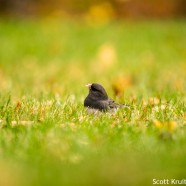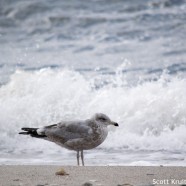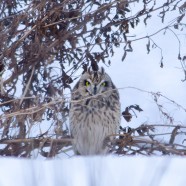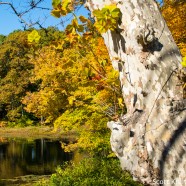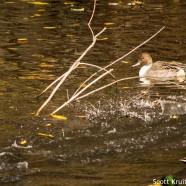The grass is always greener
I like to think that this Dark-eyed Junco, alone with its thoughts, is pondering whether or not, “The grass is always greener on the other side.” In this case the answer should be a resounding “Yes!” shouldn’t it? Or maybe not because it is green on all sides, even in November…until it is encased in snow and ice. Scott Kruitbosch Conservation & Outreach Coordinator
Read MoreWaiting for waterfowl
Whether it is the shores of Lake Erie or Chautauqua Lake to areas across the Chautauqua Allegheny region and the Northeast most observers have noted a slow movement of waterfowl thus far in November. The fall flocks of ducks, loons, swans, scoters and more will soon be moving rapidly as frigid air, ice and snow descend upon our section of the country. Without chilly temperatures freezing water and pushing birds south there are often not many to be seen, but by the time Thanksgiving rolls around we should have our typical abundance and diversity.
Read MoreWinter raptor surveys with NYSDEC
The Roger Tory Peterson Institute of Natural History will be assisting the New York State Department of Environmental Conservation for a second season of wintering raptor surveys in Chautauqua County in 2014-2015 and we will need your help! The primary focus of these surveys is to determine where Short-eared Owls (Asio flammeus), ‘endangered’ in New York, and Northern Harriers (Circus cyaneus), ‘threatened’ in New York, are spending the winter season to roost and feed. Western New York’s NYSDEC Region 9 is a large geographical area and we at RTPI volunteered our time...
Read MoreSycamore Tree on a pond
The brilliant autumn foliage surrounding this pond was being guarded by a sizable Sycamore Tree. A couple dozen camera-shy Mallard and American Black Ducks were present and more waterfowl will be moving in shortly. In a couple of months this very spot may be enveloped in ice and snow, pure white with the tree looking as if it has arctic camouflage. I will be sure to return to find some colder charm then. Scott Kruitbosch Conservation & Outreach Coordinator
Read MoreNorthern Pintails: male and female
As we get deeper into autumn we also receive a greater diversity of waterfowl joining us in the Northeast. I wanted to share some photos of male and female Northern Pintails (Anas acuta) that I took last week in the middle of a large flock of Mallard and American Black Duck. Some of them were more interested in mating than anything else making it difficult for the Pintails trying to feed, preen and stretch. I noticed the male first due to its distinctive plumage that always helps it stands out well in a crowd. Northern Pintails are slender birds and males have a long, pointed tail that help...
Read More



